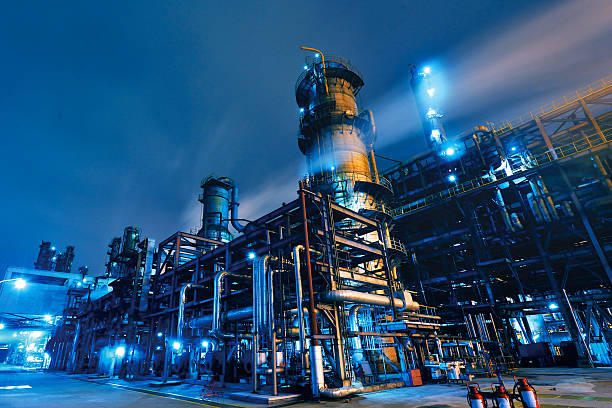1. **”The Future of Manufacturing: How Automation and AI Are Reshaping Industry Standards”**
August 6, 2024

The manufacturing industry is undergoing a profound transformation driven by advancements in automation and artificial intelligence (AI). As companies seek to enhance efficiency, reduce costs, and improve product quality, the integration of these technologies is reshaping industry standards and setting the stage for a new era of manufacturing. In “The Future of Manufacturing: How Automation and AI Are Reshaping Industry Standards,” we explore the impact of these innovations on the manufacturing sector and what the future may hold.
### The Rise of Automation in Manufacturing
1. **Enhanced Efficiency**: Automation technologies, such as robotics and conveyor systems, have revolutionized manufacturing processes by increasing speed and precision. Robots can perform repetitive tasks with high accuracy, reducing the likelihood of errors and enhancing production rates. Automation also enables 24/7 operations, minimizing downtime and maximizing output.
2. **Flexible Manufacturing Systems**: Modern automation systems are designed to be flexible, allowing manufacturers to quickly adapt to changing production needs. Technologies like programmable logic controllers (PLCs) and modular robots enable easy reconfiguration of production lines, supporting the manufacture of diverse products without significant downtime or retooling.
3. **Improved Safety**: Automation enhances workplace safety by taking over dangerous and physically demanding tasks. Robots and automated systems can handle hazardous materials and perform tasks in environments that would be unsafe for human workers. This shift not only protects employees but also reduces the risk of workplace accidents and associated costs.
### The Role of AI in Manufacturing
1. **Predictive Maintenance**: AI-powered predictive maintenance systems use data analytics and machine learning to monitor equipment performance in real-time. By analyzing historical and operational data, these systems can predict potential equipment failures before they occur, allowing for timely maintenance and reducing unplanned downtime. This approach improves equipment reliability and extends the lifespan of machinery.
2. **Quality Control**: AI technologies, including computer vision and machine learning algorithms, are enhancing quality control processes. Automated inspection systems can detect defects and anomalies with greater accuracy than human inspectors. These systems analyze high-resolution images of products to ensure they meet quality standards, reducing the likelihood of defective products reaching consumers.
3. **Optimized Production Planning**: AI algorithms analyze vast amounts of data to optimize production planning and scheduling. By considering factors such as demand forecasts, supply chain constraints, and production capabilities, AI can generate efficient production schedules that minimize waste and maximize resource utilization. This data-driven approach helps manufacturers respond more effectively to market demands and reduce operational costs.
### Integration and Implementation
1. **Smart Factories**: The concept of smart factories embodies the integration of automation and AI to create interconnected and intelligent manufacturing environments. Smart factories utilize IoT (Internet of Things) devices, sensors, and data analytics to enable real-time monitoring and control of production processes. This interconnected approach allows for greater visibility, efficiency, and adaptability in manufacturing operations.
2. **Supply Chain Integration**: Automation and AI are also transforming supply chain management. Advanced technologies facilitate seamless communication between suppliers, manufacturers, and distributors, improving coordination and reducing lead times. AI-driven supply chain optimization tools can predict demand fluctuations, optimize inventory levels, and streamline logistics, leading to a more agile and responsive supply chain.
3. **Employee Training and Upskilling**: As automation and AI become more prevalent, there is a growing need for workforce training and upskilling. Employees must acquire new skills to work alongside advanced technologies and adapt to evolving job roles. Manufacturers are investing in training programs and educational initiatives to ensure that their workforce is equipped to leverage the benefits of automation and AI effectively.
### Challenges and Considerations
1. **Initial Investment and Costs**: The implementation of automation and AI technologies can involve significant upfront costs, including the purchase of equipment, software, and integration services. While these technologies offer long-term benefits, such as increased efficiency and reduced operational costs, the initial investment can be a barrier for some manufacturers. Financial planning and cost-benefit analysis are essential for successful adoption.
2. **Cybersecurity Risks**: The increased connectivity and data exchange associated with automation and AI introduce potential cybersecurity risks. Protecting sensitive data and ensuring the security of interconnected systems are critical concerns. Manufacturers must implement robust cybersecurity measures and protocols to safeguard their operations against cyber threats.
3. **Workforce Impact**: The adoption of automation and AI may lead to changes in job roles and workforce requirements. While these technologies can enhance productivity and create new job opportunities, they may also result in job displacement for certain roles. Addressing workforce concerns and providing support for affected employees is an important aspect of managing the transition to a more automated manufacturing environment.
### The Future Outlook
The future of manufacturing will likely see continued advancements in automation and AI, driving further innovation and efficiency. As technology evolves, manufacturers will have the opportunity to explore new applications, such as autonomous vehicles, advanced materials, and personalized production processes. The integration of these technologies will enable manufacturers to stay competitive, meet evolving customer demands, and contribute to a more sustainable and efficient industry.
### Conclusion
“The Future of Manufacturing: How Automation and AI Are Reshaping Industry Standards” highlights the transformative impact of automation and artificial intelligence on the manufacturing sector. By enhancing efficiency, improving quality control, and optimizing production processes, these technologies are setting new benchmarks for the industry. As manufacturers navigate the challenges and opportunities presented by these advancements, the future of manufacturing promises to be characterized by innovation, adaptability, and continued growth.